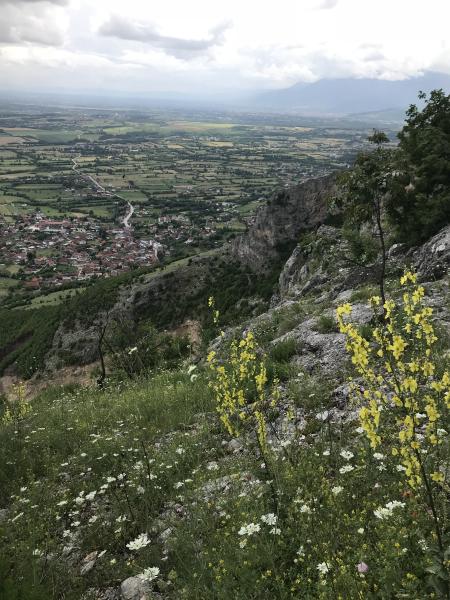A Tale of Three Hillforts: The Multiple Roles of Hillforts in Influencing the Settlement and Land Use in the Plains of Dukagjin in Prehistory
Erina Baci, PhD Candidate, Department of Anthropology, University of Michigan

Friday, November 19, 2021
12:00-1:00 PM
Virtual
Settlement and mobility are prominent threads in Anthropology as they touch on an important factor of what it means to be human. As such, trying to understand why people live where they do and choose to move when they do is a research interest of many archaeologists. Drawing on survey data from the RAPID-K project as well as surface collections from my own pilot research, I aim to further our understanding of settlement patterns in Western Kosova in prehistory. Specifically, by exploring the role hillforts play in influencing the movement of people and land use in the area. Traditional interpretations of hillforts conclude that their role in prehistory was as defensible sites or refuges. While this was surely the case, I aim to complicate this understanding by exploring the multiple additional roles these strategically located sites may have filled in the past. This summer, I conducted surface collections at three hillforts in Western Kosova; Krye, Gradine, and Gjyteti. Magnetometry survey was also conducted at the last two. While varying in size, elevation and underlying geology, these three sites share a common characteristic; they are strategically located along the southern slopes of the Accursed Mountains, overlooking the plains of Dukagjin. This placement allows for wide viewsheds of their surroundings, which encompass key flat settlements below. The GIS, magnetometry and surface collection results present three very different profiles, suggesting that the sites filled different roles in the prehistoric landscape.
| Building: | Off Campus Location |
|---|---|
| Location: | Virtual |
| Event Link: | |
| Event Type: | Livestream / Virtual |
| Tags: | Anthropology, Archaeology |
| Source: | Happening @ Michigan from Museum of Anthropological Archaeology, Department of Anthropology |

